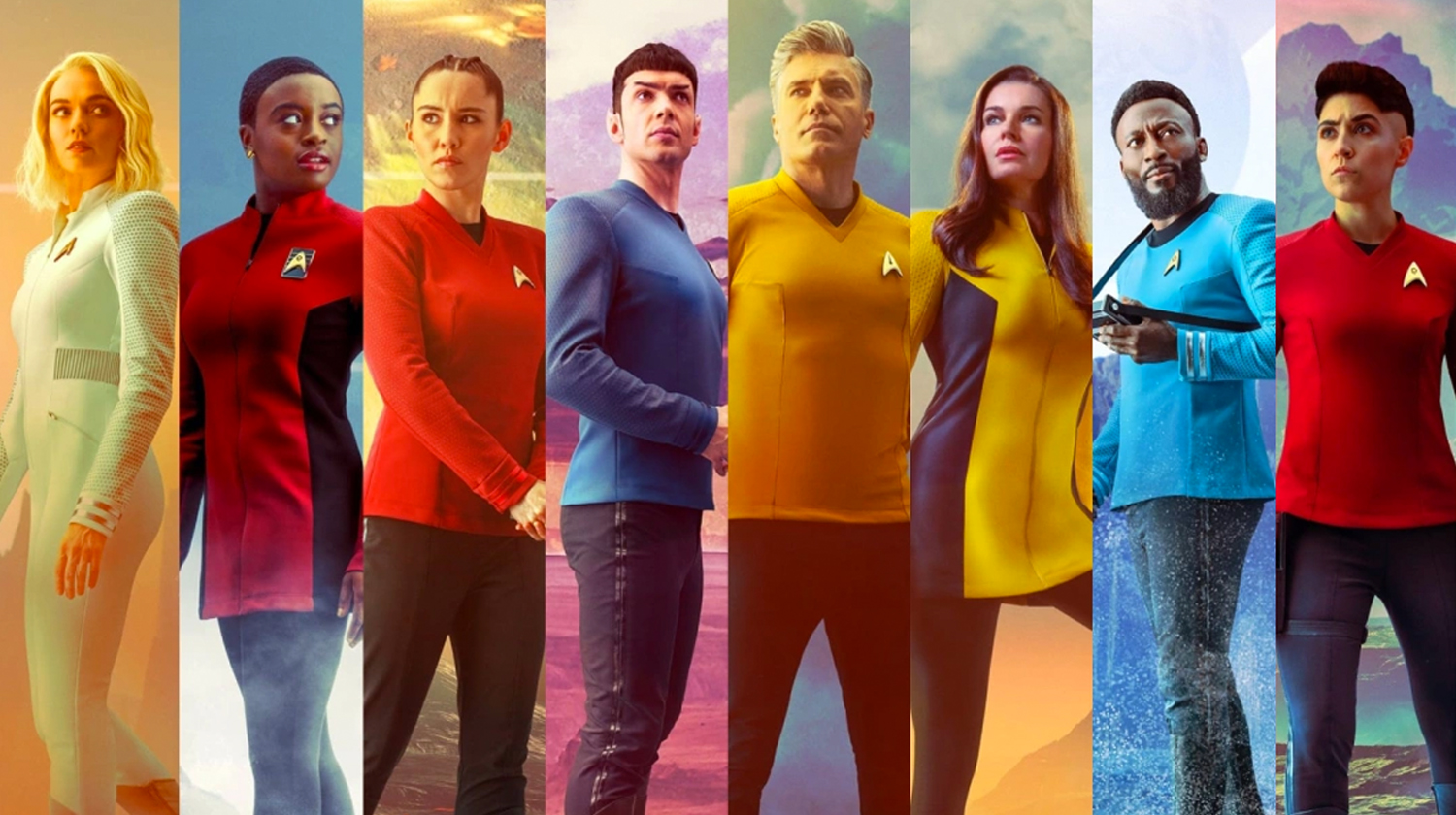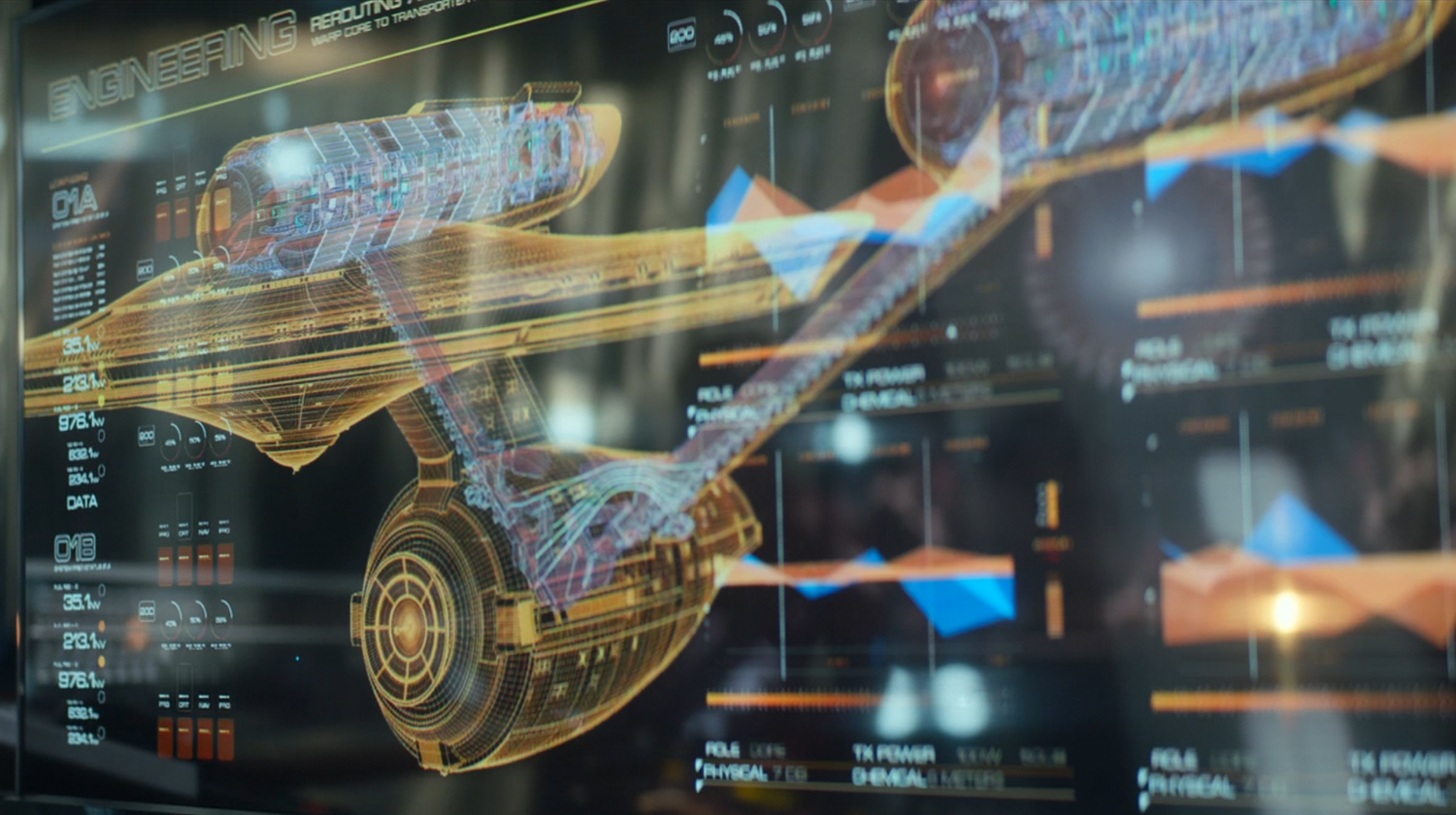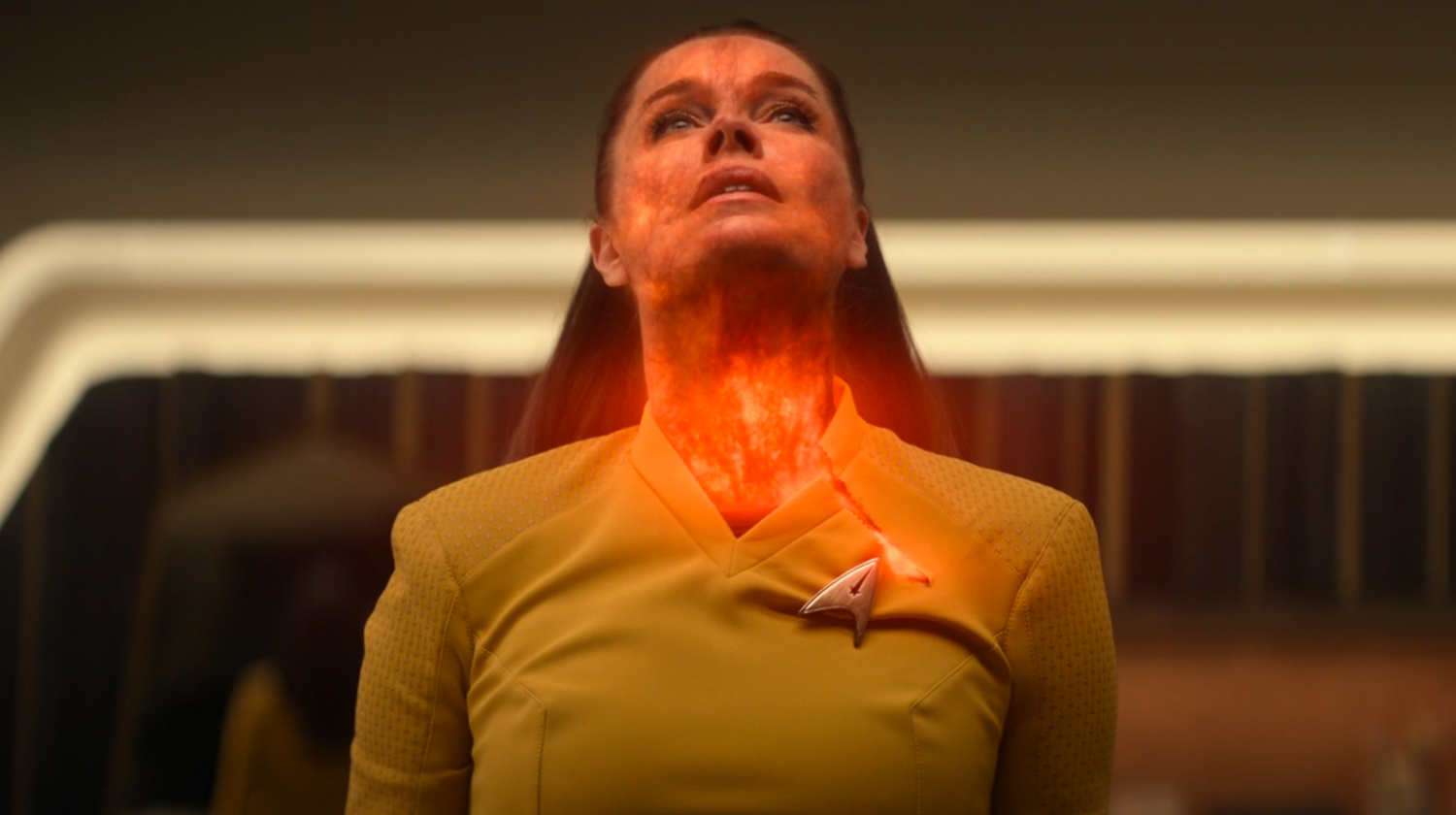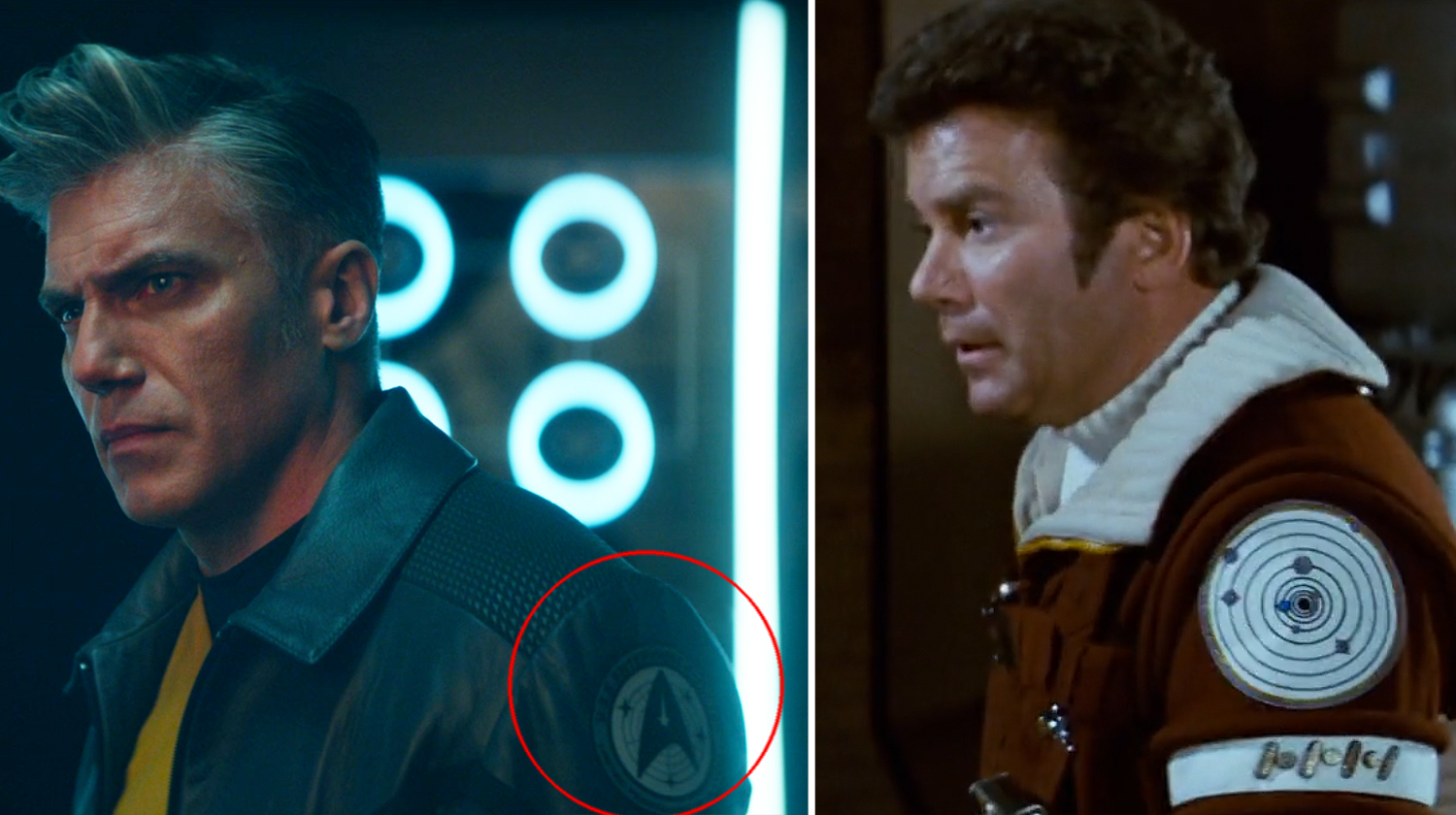'Star Trek: Strange New Worlds' episode 3 builds up backstories for Number One, M'Benga
Are short seasons stunting the growth of "Star Trek"? Lest we forget that "The Original Series" was made up of 29 episodes.

Warning: Spoilers for "Star Trek: Strange New Worlds" season 1, episode 3
For the first time in a very long time it seems, fans of "Star Trek" are actually agreeing on something and that is how good "Strange New Worlds" is. So much so, that The Wrap reports that "Star Trek: Strange New Worlds” garnered a 92% increase in demand for the week ending Friday, and became the top new series in the U.S. with 35.1 times the average series demand, according to Parrot Analytics‘ data, which takes into account consumer research, streaming, downloads and social media, among other consumer engagement."
And while we're only three episodes into the new Paramount Plus series (and making our way through lots of new backstories), there's no denying that this incarnation of "Star Trek" looks utterly gorgeous. The USS Enterprise has never looked better and the pseudo-retro style of the J.J. Abrams' 2009 movie has been seamlessly blended with both the vintage style of "The Original Series" and the new interpretation of that vintage style. Oh, and did you see those away mission jackets this week?! Mmmm.
- Want to try Paramount Plus? Here's a free one-month trial
- Subscribe to Paramount Plus for $5.99/month
In episode 3, entitled "Ghosts of Illyria," we join our super-slim Starfleet crew on an away mission to Hetemit IX and an abandoned colony of the Illyrians, a humanoid race considered outcasts by the Federation due to their use of genetic engineering. And one thing's for sure, William Shatner's stomach would never have survived these new Starfleet uniforms.

Check out our Star Trek streaming guide to catch up on everything Trek on Paramount Plus.
Unfortunately, the area is frequently bombarded with ion storms and a particularly bad one is fast approaching their position. In a blink-and-you'll-miss-it-moment, one unsuspecting red shirt takes a quick peek into what looks like a storage cupboard with lots of empty glass jars, beakers and flasks ... and the fate of the Enterprise crew is sealed. With the exception of Captain Christopher Pike (Anson Mount) and Mr Spock (Ethan Peck), the away team, led by Lt. Cmdr. Una Chin-Riley (Rebecca Romijn) makes it back safely after some frantic power re-routing by Cmdr. Hemmer (Bruce Horak). Oh, and did you see those engineering graphics this week?! Mmmm.
Following that amazing opening credit sequence, members of the away team seem to start exhibiting strange behavior that can only be described as an addiction to bright light. Even Chin-Riley is not immune, only she kinda is. Turns out that a virus has been brought back aboard the ship — we're looking at you Ensign Lance — that wasn't picked up by the transporter filters (more on that later) and is proving to be something of a pickle to detect ... because it's transmitted on light waves and/or particles. (Science check: light is a wave and a particle as proven by the double-slit experiment.)
Related: 'Star Trek: Strange New Worlds' episode 2 adds to Uhura's history
Breaking space news, the latest updates on rocket launches, skywatching events and more!
And this is where the producers of "Strange New Worlds" have taken an almighty leap ... of faith in their own ability. To begin with, and especially upon first viewing, you'd be forgiven for thinking the writers are taking us down the ol' we-think-she-has-it-but-is-hiding-it path, but it turns out Chin-Riley has extremis. No, not the Belgian-designed furniture, but an advanced form of genetic manipulation, or something close to it.
As she admits much later in the episode, she is an Illyrian herself. And while the primary pretext of tonight's episode focuses on discrimination and revealing hidden, potentially problematic personal details, wrapping it in the tasty tortilla of a contamination crisis, this also sets a precarious new precedent for this character, since being Illyrian includes having super-strength and super-immunity.
Much like the whole Picard-is-now-an-android thing, if this is not handled properly, we could be left asking ourselves on every away mission that falls foul, why didn't Chin-Riley carry them, or hold the door, or support that pillar, or throw that car at them. Granted she's reluctant to reveal her true ancestry, but quite a few people witnessed her carrying the 180-pound-plus of Hemmer on her shoulder through the corridors of the Enterprise like he was a medium-sized, rolled Moroccan rug. We'll wager a hundred quatloos that there's an episode coming some time in our future where she reveals her strength in a dire emergency and is forced to trust someone to keep it quiet.
Related: 'Strange New Worlds' is a love letter to 'The Original Series'
Regardless, Chin-Riley is very much the focus in this episode to the extent that she even gets to indulge in some classic Kirk action, like ripping her tunic, doing the long stare into her mirror in her quarters and even a full-on fistfight with Lt. La'an Noonien-Singh (Christina Chong) as more crewmembers begin to exhibit addiction-like behavior to light.
Nerd Note: The Illyrians are the same race that Captain Archer was forced to commit piracy against during the Xindi War in the epic "Enterprise" episode "Damage" (S03, E19). They were portrayed then with cranial ridges, which obviously are not present on Lt Cmdr Chin-Riley. However, the photographs she scans through in her quarters do show some Illyrians still with visible cranial ridges, so one assume they've been phased out through genetic manipulation.
Meanwhile, back on Hetemit IX, Pike and Spock have to deal with creatures that look they've come straight out of the Ark of the Convenient. However, unlike those spiritual servants of God that melt your face, incinerate your heart, or cause your head to explode, these ones thankfully shield the stranded Starfleet officers from the ion storm and thus save their lives.
Through the convenient application of some medical black magic, Nurse Christine Chapel (Jess Bush) is able to create an antidote from Chin-Riley after she shielded Noonien-Singh from a bad dose of radiation and "her proximity to the commander created chimeric antibodies in her system," which you know, could be replicated. Phew. So with everyone more or less out of trouble — and no word on the condition of poor Ensign Lance — we circle round to why the transporters didn't pick up this particular pesky pathogen.
Following the moral lesson of today's story, which is all about acceptance, surviving prejudice and forgiveness we learn that Dr. malpractice M'Benga (Babs Olusanmokun) didn't let Starfleet upgrade the medical transporter when the Enterprise was in spacedock. Hemmer's level five ship-wide diagnostic revealed the good doctor was in fact keeping something stored inside the transporter's pattern buffer, which would've been discovered during the scheduled biofilter enhancement. Turns out that his daughter, Rukiya, was diagnosed with cygnokemia a year ago and so he took it upon himself to store inside the pattern buffer until a cure could be found. As long as she's taken out of storage, so to speak, every now and again, she'll be fine. Apparently.
Nerd Note: The creators of "Star Trek" have never officially confirmed that transporters kill you. However, solely based on the science, transporters do kill you. In simple terms, these teleportation devices scan every molecule in your body and briefly store them in the pattern buffer, while at the same time, the original body is to all intents and purposes, disintegrated. The transporter then converts the scanned copy into energy and beams the data stream to the desired location, where the body is rebuilt, from a sub-atomic level, using technology similar to a replicator. It's comparable in principle to a fax, except this fax machine destroys the original, to prevent duplication, although that has been known to happen.
The issue is essentially an existential one. Since our bodies are made up of identifiable matter, why won't transference of consciousness occur? What makes our consciousness so unique? What's the difference between an identical copy and you? If you were to put your copy into a different room that you hadn't been into, would you be able to see it? No. It's a perfect copy, but it's not you. There is a good article on Ars Technica that really goes into detail on this.
The first transporter accident occurred in "The Original Series" episode "The Enemy Within" (Season 1, Episode 4) when Captain Kirk was accidentally duplicated in the transporter and something similar happened to Will Riker in "The Next Generation" episode "Second Chances" (Season 6, Episode 24). But it's the TNG episode "Relics" (Season 6, Episode 4) when Captain Montgomery Scott was discovered to be stored inside the pattern buffer of a ship that crashed on a Dyson sphere more than 75 years prior, that's perhaps more relevant.
So it's highly likely we'll be seeing more of young Rukiya M'Benga (Sage Arrindell) in future episodes.
On a side note, we do so very much hope that Harcourt Fenton Mudd makes an appearance in the not too distant future. Mudd is magnetic. Mudd is mesmerizing. He is enigmatic, charismatic and just plain mischievous, plus Rainn Wilson's portrayal of this epic, underrated character was magnificent. Tragically, his appearance was only limited to two episodes in the first season of "Discovery" and then a "Short Trek" not long after. Those were set around the second half of 2250 and he won't meet Captain Kirk until 2266, with this current season of "Strange New Worlds" being set in 2259, so theoretically it's possible.
For the first time since "Nu-Trek" started, we are genuinely excited about how this spin-off show is unfolding and we still have seven more episodes left ... which raises an interesting question; the first season of "The Original Series" had in comparison, a seemingly staggering 29 episodes. And it's not just limited to "Star Trek." Vanity Fair recently ran an interesting article where it considered how despite there being more shows on offer, those same shows have significantly fewer episodes — and fewer seasons to prove themselves and to allow us to be more invested in the characters. Suffice to say that in today's climate, "The Next Generation," "Deep Space Nine," "Voyager" and "Enterprise" would've each been a surprisingly different experience. It's food for thought at the very least.
Rating: 6½ /10
The first three episodes of "Strange New Worlds" is now available to watch on Paramount Plus as is the entire second season of "Star Trek: Picard." Season 4 of "Star Trek: Discovery" is also available on the Paramount streaming service in the US and CTV Sci-Fi or Crave TV in Canada. Countries outside of North America can watch on the Pluto TV Sci-Fi channel.
Paramount has confirmed that its streaming platform will launch in the UK and Ireland on June 22, available both as a standalone service and as part of the Sky Cinema subscription for the UK cable provider.
Follow Scott Snowden on Twitter. Follow us on Twitter @Spacedotcom and on Facebook.

When Scott's application to the NASA astronaut training program was turned down, he was naturally upset...as any 6-year-old boy would be. He chose instead to write as much as he possibly could about science, technology and space exploration. He graduated from The University of Coventry and received his training on Fleet Street in London. He still hopes to be the first journalist in space.





